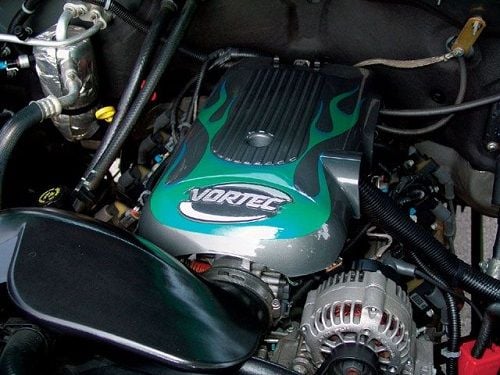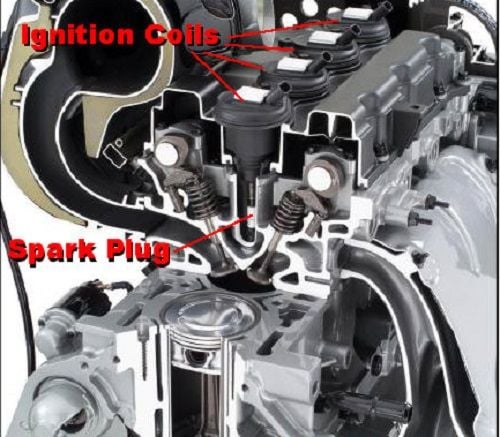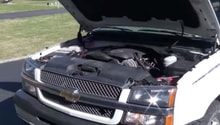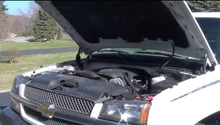Chevrolet Silverado 2007-2013: 5.3L and 5.7L Vortec Engine Differences
Both the 5.3L and 5.7L Vortec engines have been pivotal in making the Chevy Silverado one of the best-selling trucks on the planet. This article discusses the importance of the Vortec engine, explaining the key differences between the 5.3L and its predecessor, the 5.7L.
This article applies to the Chevrolet Silverado GMT900 (2007-2013)
GM’s Vortec engine family uses state-of-the-art vortex technology to swirl and tumble incoming air as well as fuel for optimum power, response, and performance. Before the first Vortec engine was introduced in 1996, Chevy and GMC trucks used throttle body injection (TBI) for fuel delivery. The Vortec engine was based off the then all-new aluminum small block V8. Besides greater efficiency and lighter weight, it was revised to be a more modern port fuel injection with fuel injectors inside the ports of the intake manifold spraying fuel inside the manifold, which mixed with the tumbling air inside, then sparked inside the combustion chamber. Inside the Chevy Silverado, the Vortec engine gives you all the power and torque you need for confident daily driving without sacrificing fuel efficiency. When on the topic of Vortec engines, it’s impossible to avoid getting into the 5.3L vs. 5.7L Vortec engine debate.
Both the 5.3L and 5.7L are powerful V8 engines in their own right. The 5.3L Vortec replaced its predecessor (the 5.7L) in the year 2000 after mounting pressure to improve upon a 40-year-old engine design and compete with more advanced truck engines. The 5.3L Vortec engine has not been offered since 2003, but it remains a favorite among enthusiasts and still has a legion of devoted fans. Whether you drive one of these Herculean powertrains or just want to expand your Chevy knowledge, read on for a closer look at the difference between the 5.3L and 5.7L Vortec engines.

Engine Design
From a design and engineering standpoint, the 5.3L and 5.7L Vortec engines are very different powertrains. For starters, the 5.3L V8 is the truck version of the LS1, which was famously introduced in the 1997 Chevy Corvette. The LS1 was the genesis of the new architecture design that would transform GM’s entire V8 line. For example, the 5.3L Vortec’s coil-on-plug ignition would eventually replace the distributor setup of all previous small-block engines, the 5.7L included. And while the 5.3L displaces less volume than the 5.7L, it has a shorter bore (96mm vs. 101.6mm) and a longer stroke (92mm vs. 88.4mm) for greater torque and horsepower.
Other highlights of the technologically-advanced 5.3L Vortec V8 include:
- Active Fuel Management (AFM): The AFM temporarily deactivates four of the eight cylinders under light driving conditions for increased fuel economy.
- Advanced Electronic Throttle Control (ETC): The ETC removes the mechanical link between the accelerator pedal and throttle body for seamless and highly accurate throttle control.
- E85 Flex-Fuel Capability (E85): The E85 or ethanol is a clean-burning renewable fuel that produces fewer greenhouse gases than traditional gasoline.
- Variable Valve Timing (VVT): The VVT delivers optimal valve timing for performance, fuel economy, and drivability.

Featured Video: How Chevy's "AFM" System Works
Torque and Horsepower
Talk with any truck enthusiast about the differences between the 5.3L and 5.7L Vortec powertrains, and you’ll inevitably end up on the subject of torque and horsepower. The last generation of 5.7L Vortec V8s to be produced made 255 horsepower at 4,600 rpm and 330 lb. ft. of torque at 2,800 rpm. The first generation 5.3L Vortec V8s were already more powerful than the larger 5.7L V8s (270 horsepower), and would become more powerful with each new addition. For example, 5.3L Vortec engines manufactured between 2004 and 2007 made 295 horsepower at 4,000 rpm and 335 lb. ft. of torque at 2,800 rpm.
Featured Video: Chevrolet 5.3L V8 on the Dyno
Related Discussions
- 5.3L vs. 5.7L Vortec - ChevroletForum.com
- Vortec Specs - ChevroletForum.com
- 5.3L or 5.7L? - Chevroletforum.com
- 5.3L vs. 5.7L Questions - Chevroletforum.com






